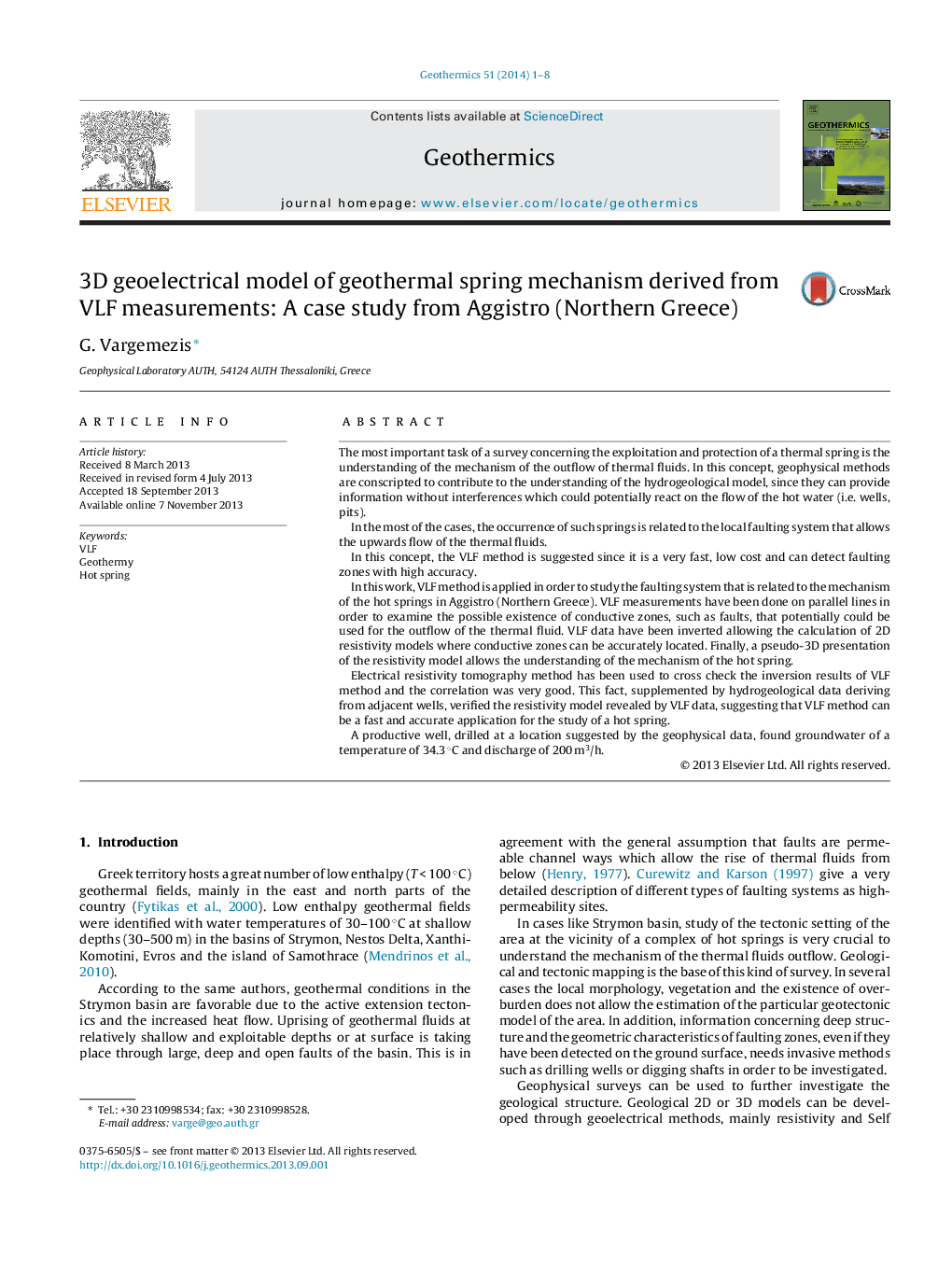| کد مقاله | کد نشریه | سال انتشار | مقاله انگلیسی | نسخه تمام متن |
|---|---|---|---|---|
| 1742369 | 1521917 | 2014 | 8 صفحه PDF | دانلود رایگان |

• The VLF electromagnetic method is used to detect fractured zones.
• 2D resistivity models are calculated from VLF data.
• Resistivity tomography has been used to cross check the VLF resistivity models.
• 3D resistivity model of the area has been created.
• Hydrowell verified the geophysical results.
The most important task of a survey concerning the exploitation and protection of a thermal spring is the understanding of the mechanism of the outflow of thermal fluids. In this concept, geophysical methods are conscripted to contribute to the understanding of the hydrogeological model, since they can provide information without interferences which could potentially react on the flow of the hot water (i.e. wells, pits).In the most of the cases, the occurrence of such springs is related to the local faulting system that allows the upwards flow of the thermal fluids.In this concept, the VLF method is suggested since it is a very fast, low cost and can detect faulting zones with high accuracy.In this work, VLF method is applied in order to study the faulting system that is related to the mechanism of the hot springs in Aggistro (Northern Greece). VLF measurements have been done on parallel lines in order to examine the possible existence of conductive zones, such as faults, that potentially could be used for the outflow of the thermal fluid. VLF data have been inverted allowing the calculation of 2D resistivity models where conductive zones can be accurately located. Finally, a pseudo-3D presentation of the resistivity model allows the understanding of the mechanism of the hot spring.Electrical resistivity tomography method has been used to cross check the inversion results of VLF method and the correlation was very good. This fact, supplemented by hydrogeological data deriving from adjacent wells, verified the resistivity model revealed by VLF data, suggesting that VLF method can be a fast and accurate application for the study of a hot spring.A productive well, drilled at a location suggested by the geophysical data, found groundwater of a temperature of 34.3 °C and discharge of 200 m3/h.
Figure optionsDownload as PowerPoint slide
Journal: Geothermics - Volume 51, July 2014, Pages 1–8